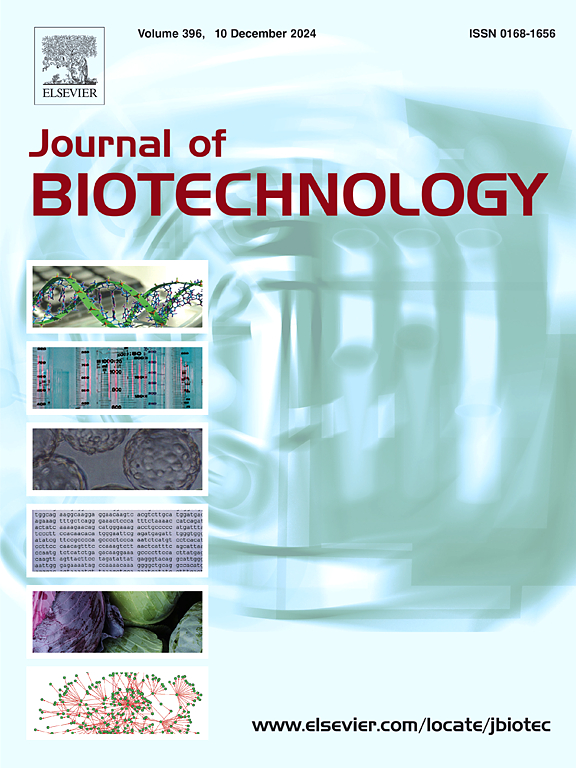Enhanced tolerance of Clostridium tyrobutyricum to lignin-derived phenolic acids by overexpressing native reductases
IF 4.1
2区 生物学
Q2 BIOTECHNOLOGY & APPLIED MICROBIOLOGY
引用次数: 0
Abstract
Ferulic acid (Fer) and p-coumaric acid (Coum) are major phenolic inhibitors in lignocellulosic hydrolysates that severely hinder the growth and metabolism of Clostridia species. This study demonstrates that the reduction of Fer and Coum to dihydroferulic acid and phloretic acid by Clostridium tyrobutyricum significantly alleviates their toxicity. Overexpression of the dho1 and sdr1 genes, encoding Fer and Coum reductases, respectively, in C. tyrobutyricum can significantly enhance tolerance to these phenolic acids. As a result, the recombinant strain ATCC 25755/ds, which co-overexpresses dho1 and sdr1, exhibited a marked increase in butyrate production compared to the wild-type strain under phenolic acid stress. In fed-batch fermentation with a 1.0 g/L mixture of Fer and Coum (1:1, w/w), ATCC 25755/ds showed a 35.1 % increase in butyrate production and a 61.1 % higher productivity. These results indicate that enhancing phenolic acid reduction can significantly improve Clostridia’s tolerance to phenolic acids, thereby strengthening the biotransformation of lignocellulose hydrolysates.
求助全文
约1分钟内获得全文
求助全文
来源期刊

Journal of biotechnology
工程技术-生物工程与应用微生物
CiteScore
8.90
自引率
2.40%
发文量
190
审稿时长
45 days
期刊介绍:
The Journal of Biotechnology has an open access mirror journal, the Journal of Biotechnology: X, sharing the same aims and scope, editorial team, submission system and rigorous peer review.
The Journal provides a medium for the rapid publication of both full-length articles and short communications on novel and innovative aspects of biotechnology. The Journal will accept papers ranging from genetic or molecular biological positions to those covering biochemical, chemical or bioprocess engineering aspects as well as computer application of new software concepts, provided that in each case the material is directly relevant to biotechnological systems. Papers presenting information of a multidisciplinary nature that would not be suitable for publication in a journal devoted to a single discipline, are particularly welcome.
 求助内容:
求助内容: 应助结果提醒方式:
应助结果提醒方式:


